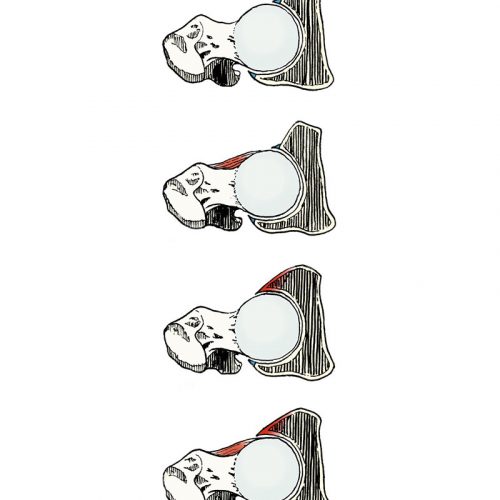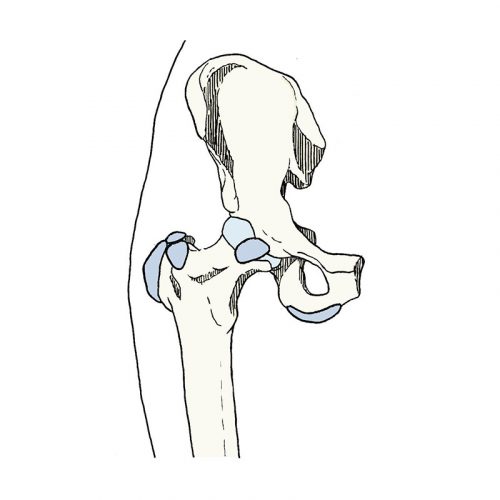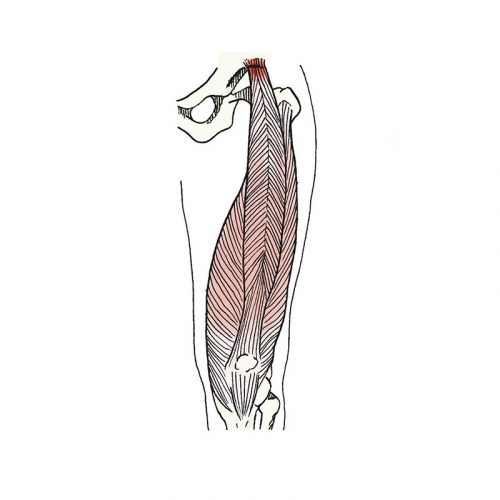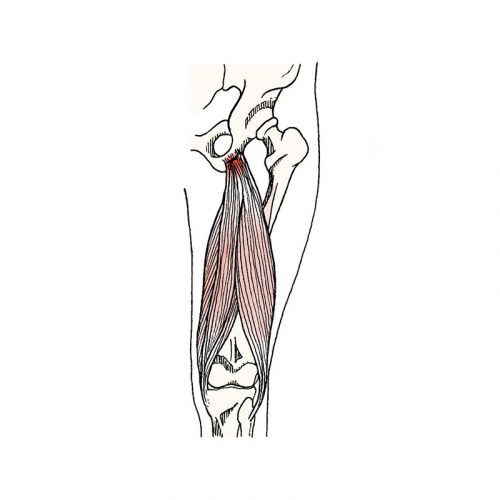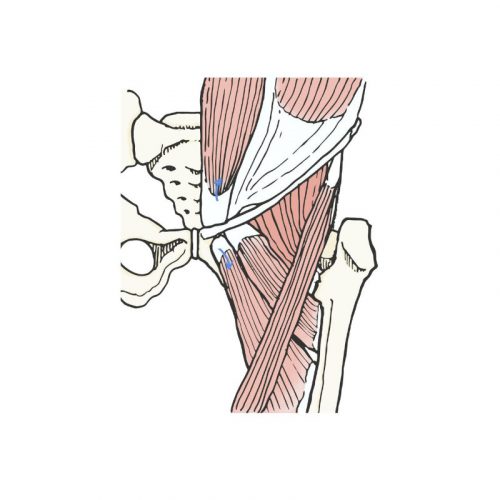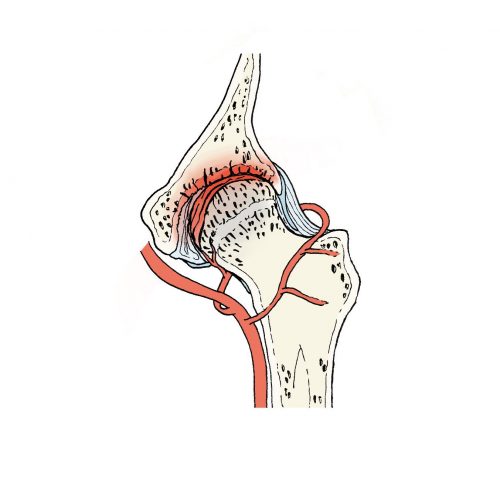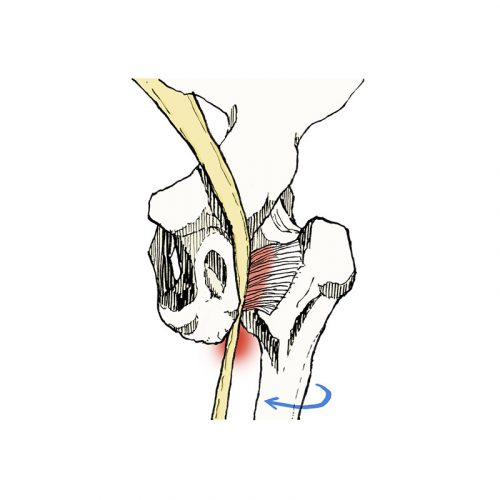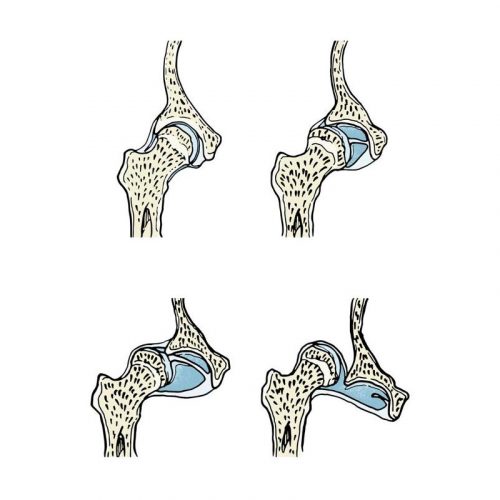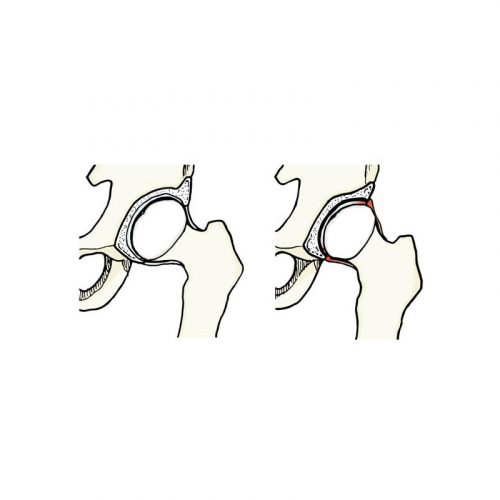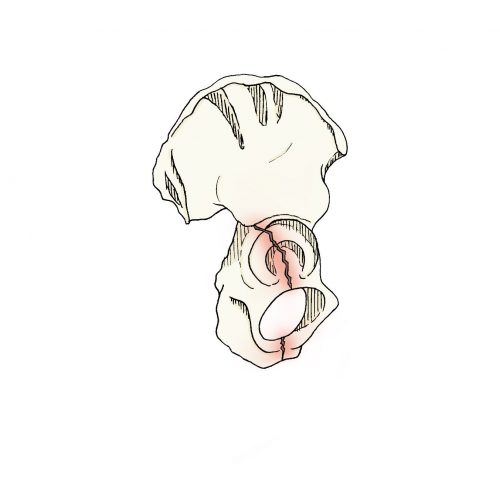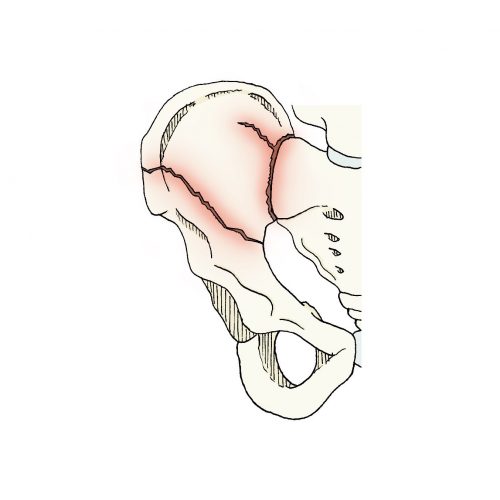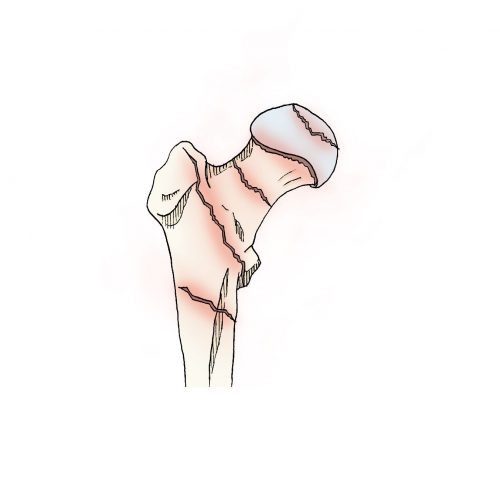Pathologies
Femoroacetabular Impingement (FAI)
Femoral-acetabular impingement (FAI) results from abnormal contact between the proximal femur and the acetabulum during the terminal phase of the hip joint range of motion.
Hip Labral Tear
The acetabular labrum is a fibrocartilaginous structure that surrounds the hip joint almost entirely. Its functions are to increase stability, promote proprioception and seal the joint.
Coxarthrosis / Hip Arthrosis
Coxarthrosis, osteoarthrosis or arthrosis of the hip is nothing more than the progressive wearing away and disappearance of the noble tissue that constitutes the hip joint, which is the cartilage.
Trochanteric Pain Syndrome (TPS)
Coxarthrosis / Arthrosis of the The trochanteric painful syndrome corresponds to a spectrum of pathology of the hip abductor apparatus. “Spectrum” is not a casual term, as there are several pathologies of these structures.
Tendinopathy of the Anterior Rectum
Injuries to the anterior rectum are usually sports injuries, caused by a violent eccentric contraction of the muscle, i.e. where the muscle is stretched while contracting.
Ischiotibial and Crural Biceps Tendinopathy
The injury can occur acutely, with rupture at the myotendinous junction. Less frequently, the tendon ruptures or pulls out a bony portion at the ischion.
Pubalgia / Pubalgic Syndrome
Pubic pain, pubic syndrome or sportsman’s hernia does not refer to a specific type of pathology. Rather, it refers to a set of injuries that result from a muscular imbalance between the muscle groups that are part of the pubis: abdominals and adductors.
Snapping Hip
Snapping hip can be external/ extra-articular (trochanteric) or internal/ intra-articular (inguinal). It is a pathology of friction or abnormal contact between a tendon structure and a bony prominence.
Avascular Necrosis of the Femoral Head (AVN)
Avascular necrosis of the femoral head (AVN) occurs when, for whatever reason, the blood supply of the proximal epiphysis of the femur (the femoral head) is no longer effective, leading to a state of insufficient blood supply, leading to a process of hypoxia and death (necrosis) of the bone tissue.
Pyriform / Pyramidal Syndrome
This pathology designates the compression of the sciatic nerve by the piriformis muscle. The piriformis is a small pyramidal muscle located deep to the gluteal muscles in the upper region of the hip joint, it is part of the set of 6 external rotators and extends from the sacrum to the greater trochanter.
Dysplastic Hip Disease (DDA)
This pathology encompasses a wide spectrum of presentations and severity. It is generically characterized by acetabular dysplasia, dysplasia of the proximal part of the femur (head, neck and trochanteric region) and ligamentous laxity, which may appear in isolation or together.
Acetabulum and Pelvic Ring Fracture
Fractures of the acetabulum and pelvic ring are injuries associated with high-energy trauma such as road accidents, being run over by a car, falls from height or accidents at work. In older patients, small falls from their own height may cause acetabular or pelvic lesions in more fragile bones.
Femoral Head Fracture
Femoral head fracture are rare, usually as a result of high-energy trauma, and may be associated with hip fractures or hip dislocations.
Femoral Neck Fracture
This is a fracture of the upper region of the thigh bone. Most occur in older people with bones weakened by osteoporosis as a result of low-energy trauma. In young people they usually result from high-energy trauma.

